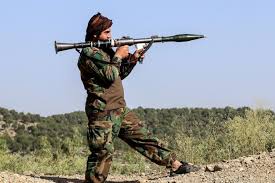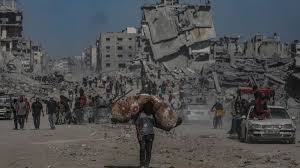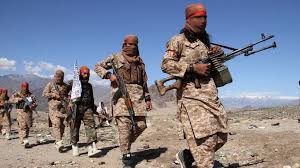israel gaza ceasefire 2025
israel gaza ceasefire 2025 October 10, 2025, Israel and Hamas implemented a landmark ceasefire in Gaza after nearly two years of intense conflict. The agreement — negotiated with mediation from the United States, Egypt, Qatar, and Turkey — marks the most significant breakthrough in the Gaza war since it began in October 2023.
Under the first phase of the truce, Hamas is to release 20 living hostages and the remains of others, while Israel is to free around 2,000 Palestinian prisoners and partially withdraw its troops from densely populated areas.
As the ceasefire holds—and with global attention focused on Jerusalem, Ramallah, and Gaza—this article examines:
How the ceasefire deal works (terms, phases, stakeholders
On-the-ground impact (returns, aid, security
Challenges & risks
What’s next: israel gaza ceasefire 2025?

israel gaza ceasefire 2025
The Gaza War (2023–2025)
On October 7, 2023, Hamas launched a coordinated attack into southern Israel, killing around 1,200 people and capturing ~250 hostages.
Israel responded with massive military operations in Gaza, including airstrikes, ground offensives, and sweeping incursions. Palestinian authorities say over 67,000 people have died and large parts of Gaza have been devastated.
Over the course of 2025, intermittent ceasefires, hostage exchanges, and negotiations transpired, but no comprehensive peace persisted israel gaza ceasefire 2025.
Attempts at Ceasefires Before 2025
In early 2025, a ceasefire brokered by mediators held for some weeks. But disagreements over prisoner lists, compliance, aid deliveries, and control resulted in its breakdown israel gaza ceasefire 2025.
The so-called January 2025 Gaza war ceasefire ended on 18 March 2025 when Israel launched surprise airstrikes across Gaza, accusing Hamas of failing to comply with release terms israel gaza ceasefire 2025.
Since then, both sides blamed each other for violations, disruptions of humanitarian access, and stalling negotiations.
Against this backdrop of shifting truces, the October 2025 ceasefire represents a more robust agreement with clearer exchange arrangements and phased withdrawals israel gaza ceasefire 2025.

Terms of the Ceasefire: What Was Agreed
Phase One: Hostage & Prisoner Swap, Partial Withdrawal, Aid Surg
The ceasefire is structured in phases, with Phase One already underway israel gaza ceasefire 2025.
Under the agreement:
Hamas will release 20 living hostages and hand over the remains of 28 deceased hostages within 72 hours.
In return, Israel will release ~2,000 Palestinian prisoners, including minors and women; some are already being transferred ahead of full release israel gaza ceasefire 2025.
Israeli troops will withdraw from certain urban zones, though will maintain control over more than half of Gaza initially under military oversight.
A humanitarian surge of aid is to be allowed—hundreds of trucks daily carrying food, medicine, shelter supplies. The U.N. plans to scale aid, support vulnerable families, and rebuild health systems israel gaza ceasefire 2025.
The deal is often referred to in Israel as Operation Shavim Legvulam (“Returning to Their Border”).

Conditions & Reserved Issues
Hamas disarmament is a key outstanding demand of Israel; critics note it has not been fully agreed yet.
Gaza governance post-war remains undefined. Hamas insists any governance arrangements must respect Palestinian authority without foreign trusteeship.
Verification & compliance mechanisms: mediators (U.S., Egypt, Qatar, Turkey) are expected to monitor implementation.
Israel retains the right to resume military action if violations occur, as a fallback or conditional measure.
On-the-Ground Impacts: What Is Happening Now
Withdrawal & Movement of Civilians
As the ceasefire holds, Israeli forces have begun repositioning from heavily affected urban districts to maintain buffer zones.
Thousands of Gazans are returning north toward Gaza City and northern zones, hoping to reclaim homes or land. Many find only rubble and devastation.
Aid and reconstruction crews have begun clearing debris, restoring access routes, and assessing critical infrastructure damage.
Humanitarian Surge & Challenges
The United Nations and humanitarian partners aim to dramatically scale up aid deliveries over a 60-day window. Plans include:
Reaching 2.1 million people with food supplies.
Providing nutritional support for ~500,000 children.
Distributing tents, medical supplies, cash assistance, and winterization materials.
However, obstacles persist:
Bureaucratic barriers in coordination, security clearances, crossing operations
Unexploded ordnance, blocked roads, damaged bridges complicate access. Reports show over 100 bodies recovered even after withdrawal.
Shortages in shelter, water, sanitation, electricity remain acute.
Hostage & Prisoner Exchanges in Progress
As of October 12, the ceasefire is holding on its third day ahead of the expected exchange.
Israel expects to receive the 20 living hostages early Monday morning, with the remains of the deceased to follow.
Israel has already begun relocating some Palestinian prisoners in preparation for release.
Meanwhile, both sides monitor compliance closely, with mediators ready to intervene on disputes.
Reaction Among Civilians
In Gaza, people express cautious hope yet sorrow: returning residents walk through flattened neighborhoods, retrieving basic necessities, wondering whether the ceasefire will last.
In Israel, families of hostages await reunions. Some protests and rallying for full execution of the deal have occurred.
Regional capitals prepare for diplomatic events tied to the truce, including a summit in Egypt’s Sharm El-Sheikh to formalize longer peace planning.

Obstacles & Risks to Sustaining the Ceasefire
Violation & Retaliation Threat
Both sides have incentives to accuse each other of violations. Israel insists it may resume action if Hamas fails in compliance.
Former ceasefires broke down due to disputes over prisoner lists, access, hostages not being released, or renewed attacks.
The memory of the March 2025 breakdown looms large: Israel launched surprise strikes mid-ceasefire, claiming Hamas refused to extend.
Governance & Power in Gaza
Who governs Gaza during the pause is contested. Hamas insists it will remain involved; Israel and mediators may push for oversight by international or Palestinian Authority instruments.
Hamas has reportedly said it will not continue to “rule” Gaza post-war in a traditional manner, but will remain part of governance structures.
Reconstruction & Reconstruction Funding
Gaza’s infrastructure is shattered: water, power, hospitals, homes—all devastated. Massive funding is needed for reconstruction, but coordination and accountability will be key.
Donor countries, reconstruction agencies, and regional powers will need secure access and durable security.
Corruption, delays, and political interference could hamper rebuilding.
Extremist Spoilers & Factional Splits
Other militant groups or war parties (e.g., Islamic Jihad) could act independently to undermine peace.
Internal splits within Hamas or among Palestinian factions could weaken compliance.
Hardline Israeli factions may oppose any deal that they see as granting legitimacy to Hamas israel gaza ceasefire 2025.

International Pressures & Strategic Shifts
The U.S., Egypt, and regional players will want to use the ceasefire momentum to push for a longer peace roadmap.
Israel’s coalition politics and Netanyahu’s posture may complicate full implementation israel gaza ceasefire 2025.
The ongoing Israeli demands for disarmament and security guarantees may clash with Palestinian demands for sovereignty and dignity.
What to Watch Next
Hostage & Prisoner Exchange Execution
Whether the full 20 hostages and bodies are released, and if Israel fully frees its 2,000 prisoners.
Compliance & Violations
Spot reports of skirmishes, shelling, airstrikes, or allegations of deal breaches israel gaza ceasefire 2025.
Summit Outcomes
The Sharm El-Sheikh summit will host world leaders including U.S. President Trump and may attempt to formalize phases of peace.
Aid Flow & Access
Daily truck counts, access to northern Gaza, operations in hospitals, and reconstruction starts.
Gaza Governance Structure
What authority governs Gaza in the interim (Hamas, Palestinian Authority, international mission) israel gaza ceasefire 2025.
Longer-Term Security Arrangements
Demilitarization plans, border controls, security forces, and guarantees for both parties
Return & Resettlement Welfare
How displaced Gazans fare with return, shelter, water, electricity, and social support israel gaza ceasefire 2025.
Comparative Table: Phases & Key Elements of the 2025 Ceasefire
| Phase / Component | Commitments / Terms | Current Status / Notes |
| Phase One Activation | Ceasefire begins, 20 living hostages released + remains of others, Israel releases ~2,000 Palestinian prisoners, partial Israeli troop withdrawal | Ceasefire activated Oct 10; exchanges pending. |
| Troop Repositioning | IDF withdraws from densest urban districts, retains control over buffer zones | Partial withdrawal underway; Israel still holds significant territory. |
| Aid Surge | Enable hundreds of aid trucks daily; scale medical, food, shelter, winter relief | U.N. plans to surge; operational challenges remain. |
| Monitoring & Compliance | Mediators (U.S., Egypt, Qatar, Turkey) oversee execution | Mechanisms expected, but trust and enforcement will be critical |
| Subsequent Phases | Further withdrawal, disarmament, reconstruction and governance arrangements | Still under negotiation; unresolved. |
| Risk Triggers | Any violation, hostages not released, armed incidents | Israel reserves right to resume hostilities if breaches occur |
Frequently Asked Questions (FAQs)
Q1: When did the Israel-Gaza ceasefire start?
A: The ceasefire officially went into effect on October 10, 2025 under the mediated agreement between Israel and Hamas.
Q2: What is being exchanged?
A: Hamas will release 20 living hostages and remain bodies; Israel will release ~2,000 Palestinian prisoners, some already in motion.
Q3: Will Israel fully withdraw from Gaza?
No — in the first phase Israel will reposition forces but will still hold key strategic zones and buffer areas. Full withdrawal is subject to future phases.
Q4: What is Operation Shavim Legvulam?
A: It is the codename given to Israel’s combined military-humanitarian mission associated with this ceasefire, focusing on safe return of hostages and partial withdrawals.
Q5: Can the truce last?
There is cautious optimism, but risks of violation, lack of trust, and unresolved issues (governance, disarmament) make the ceasefire fragile.
Conclusion
The 2025 Israel–Gaza ceasefire marks a fragile but pivotal turning point in a long, brutal conflict. For the first time in months, hostages may return, Palestinians may receive much-needed aid, and devastated neighborhoods in Gaza may begin the slow work of rebuilding.
Yet this pause is far from guaranteed peace. The real test lies ahead—in how faithfully both sides adhere to the deal, how ambiguous disputes are resolved, and how reconstruction, governance and security transitions evolve.
For now, the world watches cautiously—hopeful that this ceasefire is more than a brief lull, but the beginning of a path to something sustainable thereafter.
